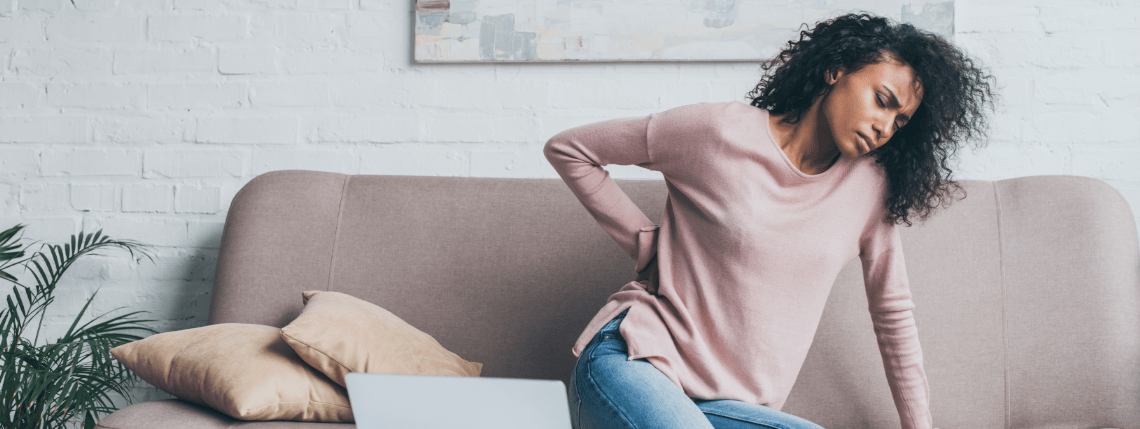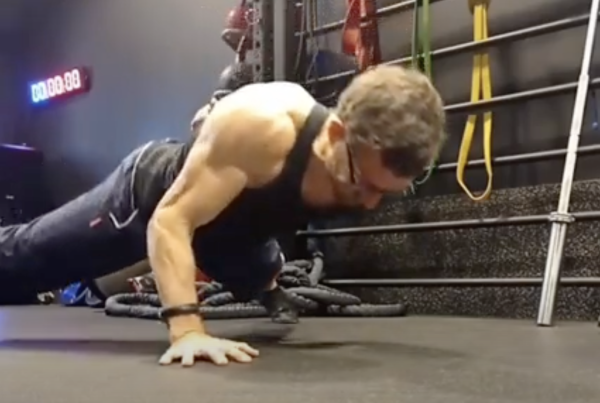Josh Smith, lead physiotherapist at Ten Health & Fitness, talks posture and busts myths surrounding this topic.
The idea of there being a perfect posture for sitting, working or doing something for a sustained period is a myth. And, as with all myths, a little myth-busting can’t hurt.
If you are anything like me, any time someone starts talking about posture, you hear echoes of your parents saying, “Sit up straight,” or “Don’t slouch!” We’ve been indoctrinated with the idea of ‘proper’ posture, that we should always sit up straight and squeeze our shoulders back.
But nobody can ever sustain this type of posture. Why not? If that really is the way we are supposed to sit, shouldn’t we be able to train our bodies to sit like that for prolonged periods?
The reality is that there are many factors that influence our posture and its effect on function. Some of these are related to how active we are (and how we’re active), our movement patterns and even the impact of any injury we’ve sustained. Others are more related to how we were put together – our genetic make-up. There is also a growing body of evidence that suggests that our state of mind is also a significant factor in determining our posture (think about how a person looks when they are stressed or fatigued).
Another important point to acknowledge is the role of symmetry when it comes to posture. Most of us are one side dominant and weren’t made to be perfectly symmetrical. Asymmetrical muscle bulk and strength, and then joint position, can be the result of this dominance and there is no evidence that this is going to cause you problems.
But what actually causes posture-related pain? All of the tissues in your body (just like any physical material) are subject to the stress-strain curve. This means that tissues under significant mechanical load, or load over a sufficiently long period of time, will deform and are likely to cause pain.
In fact, time is one of the key factors to consider.
It’s not stress itself but stress over time on a tissue that will eventually lead to increased strain on that tissue and possible deformation and pain.
Time also impacts on the function of mechanoreceptors. These receptors sit within your muscles, tendons, ligaments and joint capsules and help your brain understand where your body is in space. This feedback allows your postural muscles to turn on and help absorb some external forces. Staying in one position for too long causes your mechanoreceptors to become less effective; we’re then less cognisant of our posture and almost inevitably fall into less-than-ideal postures.
So, instead of trying to maintain a perfect posture, we should be trying to avoid prolonged postures. The quote I like most is “the best posture is your next posture”.
There’s a widely held belief that sitting and maintaining a neutral posture is effective in preventing or treating pain. However, some of the latest research doesn’t support that belief.
A study by Pape et al in 20081 demonstrated that sitting slouched can actually have a positive effect on the hydration status of the intervertebral discs in the spine. Another, by Claus et al2 and published in 2016, showed sitting with the spine in neutral is rarely adopted by healthy people without back pain. They were sitting with more of a slumped posture compared to when standing, but apparently without experiencing problems.
Posture is meant to be dynamic. The body is built for mobility and is not meant to remain statically in any one position for an extended period of time. If you work in an office or at a desk, no matter what position you are in (seated or standing) there will be some stress occurring on various structures. Changing your posture allows the stresses on those structures to be intermittent.
Our motto at Ten is “Move Better”. So, stop worrying about holding that perfect posture, stop trying to relieve neck and back pain by sitting still, and free yourself to move.
Top three tips for pain-free posture
- Experiment with different ways of sitting: sit up straight, recline or sit on a stability ball.
- Experiment with alternatives to sitting: stand up, kneel with one knee on the floor or both on a chair, adopt a wide-feet stance, etc., and make use of the other furniture in your office (especially when your office is at home).
- Take mini-breaks and move! Do 30-60 seconds of movement (squat, hang, bend over, etc.) every hour or so.
Author bio

Josh gained a breadth of experience supporting high-level sports people to get back to competition, before focusing on pain management, the underlying psychosocial components of pain and vocational rehabilitation. He combines manual and hands-on treatment with exercise-based rehabilitation and evidence-based education to address the underlying causes, rather than just the presenting symptoms.
References
- https://www.sciencedirect.com/science/article/abs/pii/S0003687017301709?via%3Dihub, accessed on 26 January 2021.
- https://www.sciencedirect.com/science/article/abs/pii/S0003687015300788, accessed on 26 January 2021.







